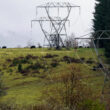This letter is to try to set things straight regarding the response in the Jan. 4 newspaper to my column on timber wolves and to Mrs. Daiute’s column in support of wolves, which appeared Dec. 28.
I’m not on either side – not totally against the wolf, but I have reservations. I believe controls on the wolf population are needed.
I’d like to respond to Mr. Elkins’ comment about Peter and the Wolf. I’m not afraid of Mr. Wolf. As for the wolves killing three to four deer per week, I’d say that was conservative.
I do agree with Mr. Elkins about poaching. There is one major difference. There are stiff laws against poaching. Some people, like some animals, kill for the lust of seeing something die. Some animals with these qualities are dogs, cats, wolves, cougar, bear, weasel and mink. We can’t say to the wolf, “only three,” or to the cougar, “only one deer per week.” What about a weasel, mink, possum, skunk or raccoon getting in a chicken house and killing the whole flock? Was this because they were hungry, or for another reason?
Regarding Mr. Ellkins comments that there are many types of wolves, I was making the point that the Cascade mountain wolf was the one that had lived in Oregon. The Canadian timber wolf is definitively a larger animal. As for God making the wolf, He also made termites, but I still don’t want them in my house.
Mrs. Daiute made a lot of good points but some may be a little skewed. No rancher I know wants disease in his livestock. As for shipping, animals do die in transport. Most ranchers will do all they can to make sure this doesn’t happen. The rancher’s profit margin is small. He can’t afford dead animals. As for the wolf kills, I’ve read the investigations. Looks like 60 to 65 percent are actual wolf kills. Some kills blamed on wolves are actually coyotes, or even somebody’s pet dogs.
As for the rustling, the two-legged predator is much worse. The problem there is it may be a neighbor. Definitely someone who knows their way around out there. With all these problems, you can see where a rancher is worried about losing any more.
Mrs. Daiute referred to having a wolf in her letter. Was that in Oregon, because I can’t find permits for them unless you own a game or exotic animal farm?
I would like the ODFW wolf biologist to explain to me what I’ve seen for a number of years in Canada. Why in the beginning of winter do the wolves take more male elk, deer, and moose? Later in the winter, they take more calves and fawns. Then, towards the end of February, they take more cows and does.
I do have my own theory – just an observation based on what other trappers and I have seen. My theory is that males get run down during the rut, when they are sore from fighting, open wounds and infections. Later, calves and fawns are competing for feed and are weaker and in worse shape. Bred cows and does become more accessible to wolves and cougars because of the advanced stage of their pregnancies. They can’t run as well.
This presents a problem. At least two are killed at once when a pregnant animal is killed but the unborn calf or fawn is not counted in the kill. The problem doesn’t show up for two years. At that time we’re short a breeding animal. This leads to a dilemma for ODFW: now the herd count is down. Three years of predation on pregnant cows can wipe out a herd.
Maybe we can fix this by importing some 2-year-old bull and cow elk. Of course they’ll have to be protected.
So what’s the answer? We all like to see game animals. What I propose is some sort of balance. There are cool heads on all sides of this problem so why not use them?
A discussion of the wolf population in the Yellowstone area can be found at http://www.skinnymoose.com/bbb/2010/03/10/panel-roundtable-canadian-gray-wolf-introduction-into-yellowstone/ . This is an interesting read from March 10, 2010 by four biologists, a rancher/outfitter and a parasitologist, all of whom have dealt with wolves for many years. The information they present regarding the wolf packs’ impact on the elk, moose and bison populations is eye-opening.The elk population has dropped 70 percent, they say. They would rather not talk about the moose population.
Another site, http://www.aws.vcn.com/wolf_attacks_on_humans.html, documents cases of wolf attacks on people in North America. This website describes many incidents and the reasoning that prevents attacks from being reported as such. It doesn’t include Kenton Joel Carnegie, who was killed Nov. 8, 2005 in Saskatchewan, Canada at Points North Camp, 35 miles northwest of Wollaston Lake. I’ve read the investigations. Check this on the internet and draw your own conclusions: http://canadahuntingtoday.com/blog/index.php/2008/12/31/death-by-wolves-and-misleading-advocacy-the-kenton-carnegie-tragedy.
Wolves have more space in Canada. With the wolf population growing here in western states I can foresee a problem of wolves losing their fear of man. The problem is we don’t know how much time is left before someone is attacked here. There needs action taken now.
Eric Rouse
Sweet Home




